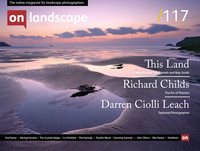Michael Gordon talks about one of his favourite images

Michael Gordon
Professional photographic artist, educator, and activist specialising in monochromatic impressions of the California desert.
In 1952, virtually unknown and financially broke, Edward Sheriff Curtis died in Los Angeles. An extraordinary turnabout for a man whose life’s work – The North American Indian - is now recognised as the most significant ethnographic record in the history of North America. Curtis was an empathetic observer of people and cultures; a visionary photographic artist; master printmaker; filmmaker; ethnographer; sound recording specialist; entrepreneur; and internationally recognised authority on the history of North American Indians. As it typically goes, Curtis was a brilliant visionary but eventually forgotten artist during his day. But boy, Ed, your day has finally arrived.
Born in Wisconsin in 1868, Curtis worked in the Pictorial tradition of his day - using light, lenses, and printing techniques to create not just photographs, but timeless and often impressionistic pictures of his subjects. At the age of 12, after completing his formal education, he built his first camera. During his teenage years, he studied photographic theory and experimented with numerous photographic techniques. In 1887, due to Edward’s father’s failing health, the Curtis family moved to the Puget Sound area near Seattle, Washington. By 1892, at the ripe age of 24, Curtis secured a loan and acquired a 50% interest in a small Seattle portrait studio. Curtis made his name in the community by photographing its wealthy and powerful members and their families and began enjoying a modicum of success. This success allowed him some free time away from the studio to pursue his landscape photography and his interest in photographing vestigial Native Americans along the waterfront.

